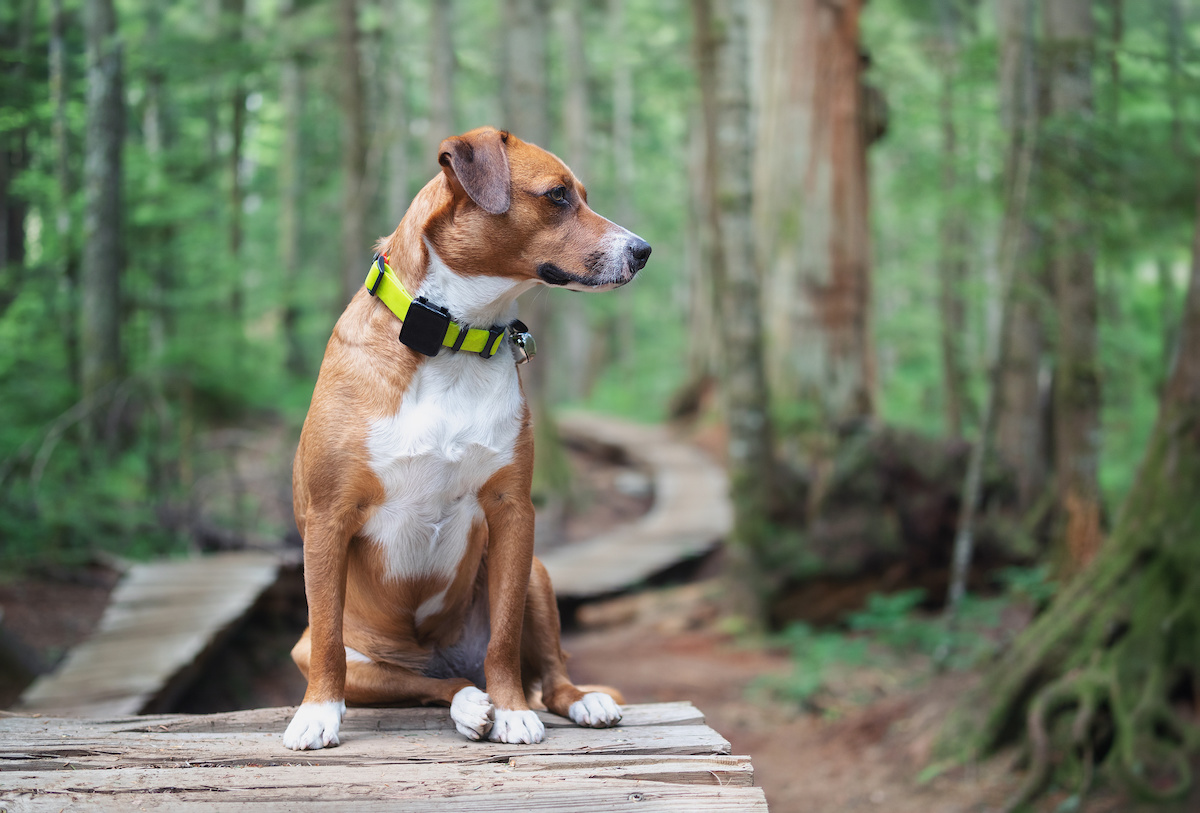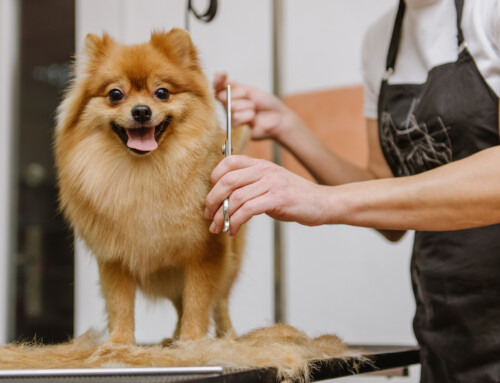Summer pet safety is something that every pup or cat parent needs to consider. In fact, it’s a vitally important part of pet care during the warmer months. Summer pet safety can save a life!
As temperatures soar, so does the importance of safeguarding the well-being of our furry friends.
From combating heatstroke to steering clear of summer pests, there’s plenty to consider to ensure your pets enjoy the season without jeopardizing their health. If you have concerns about summer pet safety for your cat or dog, please get in touch with us at Main Street Veterinarians of Stone Mountain!
Meanwhile, here are several important points to consider for your pet’s safety.
Summer Pet Safety: Overcoming the Heat with Hydration and Shade
One of the biggest threats to summer pet safety is the intense heat. On hot days, make sure your pet has access to fresh water and plenty of shade at all times.
Furthermore, consider buying a pet-friendly sunscreen for dogs and cats that spend a lot of time outdoors. This is especially true if they have light-colored fur which is more susceptible to sunburn.
If you need help choosing a sunscreen for dogs and cats, please contact us at Main Street Veterinarians.
What are the Signs of Overheating in Pets?
Just like humans, your pets can overheat on hot summer days. Prevention is key when it comes to overheating in pets. If you think your pet may be overheating, it is important to seek veterinary attention immediately.
Your cat or dog may be overheated if you notice the following signs:
- Panting excessively
- Drooling excessively
- Bright red gums
- Rapid heart rate
- Vomiting
- Diarrhea
- Lethargy
- Loss of consciousness
Help your cat or dog cool down by trying the following:
- Placing your pet in a cool bath or shower
- Soaking a towel in cool water and placing it on your pet’s body
- Fanning your pet with a cool cloth
- Giving your pet small amounts of cool water to drink
Keep an eye on your pet after they cool down and contact us with any concerns.
What are the Signs of Dehydration in Pets?
Dehydration in pets is a serious concern, especially during the blistering heat of summer. Understanding the signs of dehydration is a critical part of summer pet safety. Your pet may not be able to tell you they’re thirsty, but their behavior and physical symptoms can give you essential clues.
Look out for the following signs of dehydration in your pet:
- Loss of appetite: A dehydrated pet might lose interest in food.
- Lethargy: If your pet seems unusually tired or less active, it might be dehydrated.
- Sunken eyes: Dehydration can cause your pet’s eyes to appear sunken or dull.
- Dry nose and gums: A pet’s nose and gums are typically moist. If they’re dry or sticky, your pet may be dehydrated.
- Decreased skin elasticity: When dehydrated, the skin of a pet loses its elasticity. An easy test is to gently pull up on the skin at the back of your pet’s neck. If it doesn’t quickly spring back, your pet could be dehydrated.
- Increased heart rate: Dehydration can result in a rapid heart rate.
- Panting: While panting can be normal in dogs, excessive panting can be a sign of dehydration.
What to do if Your Pet is Dehydrated:
Dehydration can rapidly escalate into a severe and life-threatening condition, so it’s important to get professional help as soon as you notice signs of dehydration in your pet. Please call us if this is the case! Other actions to take include the following:
- Provide Fresh Water: Make sure your pet has access to fresh water. If they’re not interested in drinking, try enticing them with a bit of low-sodium chicken broth mixed into their water.
- Keep Them Cool: Heat exacerbates dehydration, so move your pet to a cool, shaded area while you wait for further instructions from your vet.
- Avoid Force Feeding Water: Never try to force your pet to drink water, especially if they are lethargic or unresponsive, as they could potentially inhale it and develop aspiration pneumonia.
Paw Protection: Hot Surfaces and Your Pet’s Feet
Imagine walking barefoot on hot asphalt. Ouch, right? That’s exactly what your pet experiences when walking on hot surfaces. In summer, the asphalt can become so hot that it can burn your pet’s paws.
Test the pavement with your hand before taking your pet for a walk. If it’s too hot for you, it’s too hot for them. Opt for grassy paths or walk during the cooler parts of the day.
High Temperatures and Cars: A Dangerous Mix
Even on mild days, the temperature inside a parked car can skyrocket within minutes, posing a serious risk to pets. In fact, if it is between 80 F to 100 F outside, your car’s internal temperature can reach 130 F to 172 F. Never leave your pet inside a parked car, even if you’re just popping into a shop for a moment. The interior can quickly become an oven, leading to fatal heatstroke in pets.
Summertime Pests: Prevention is Key
Summer pet safety also involves protecting your pet from common seasonal pests like fleas, ticks, and heartworm-carrying mosquitoes. Help keep your dog or cat protected from fleas by doing the following:
- Keep your pet’s fur clean and free of mats.
- Vacuum your home and furniture regularly, paying special attention to areas where your pet sleeps.
- Use a flea collar or topical treatment on your pet.
- Inspect your pet for fleas daily.
- If you see fleas, treat your pet and your home immediately.
Fleas can cause anemia, tapeworms, and allergic reactions in pets. Anemia is a condition in which the body does not have enough red blood cells. This can make your pet tired and weak. Tapeworms are long, flatworms that can live in your pet’s intestines. They can cause weight loss, diarrhea, and vomiting.
If you think your pet has fleas, it is important to treat them right away. You can talk to your veterinarian about the best treatment for your pet.
The Trouble with Ticks
Ticks pose a serious risk to our pets, being capable of transmitting dangerous diseases like Lyme disease, Rocky Mountain spotted fever, and ehrlichiosis. However, there’s a silver lining in our summer pet safety guide.
For example, regular tick checks are a must. After a walk in the woods or a romp in the park, examine your pet thoroughly for ticks. Pay special attention to areas where ticks love to hide. Their favorite hiding spots include under the collar, inside the ears, between the toes, and around the eyelids.
Meanwhile, using tick preventives can further bolster your pet’s protection against these pesky parasites. Numerous products on the market, from topical treatments to tick collars, can provide long-lasting defense.
Keep Your Pets Safe from Heartworm
Heartworm is a serious and potentially fatal disease that is spread by mosquitoes. Regular use of preventive treatments such as topical medications, and oral pills can help to keep your pet safe from these harmful pests.
Dangerous Plants and Foods: Summer Hazards
Barbecues and garden parties are summer staples. But they can introduce potential dangers to your pet. Foods like chocolate, grapes, and alcohol are toxic to pets.
If you have a green thumb and a thriving flower garden, watch out when it comes to dogs and cats. Some summer flowers and plants, like lilies and azalea, can be harmful if ingested. Keep an eye on your pet during gatherings and ensure harmful substances stay out of paw’s reach.
Water Safety: Not all Pets are Swimmers
Contrary to popular belief, not all pets are natural swimmers. If your summer fun includes pool time or beach visits, consider a life vest for your pet. Always supervise them around water bodies and ensure they have an easy way to get out of the water.
If you have concerns about summer pet safety, don’t hesitate to contact us at Main Street Veterinarians of Stone Mountain. We offer traditional as well as holistic pet care services for dogs and cats. Contact us today to schedule an appointment.









